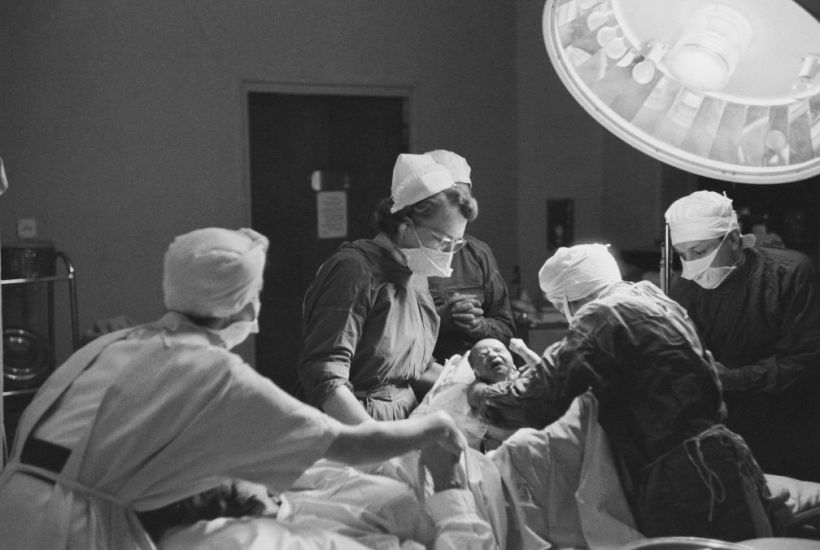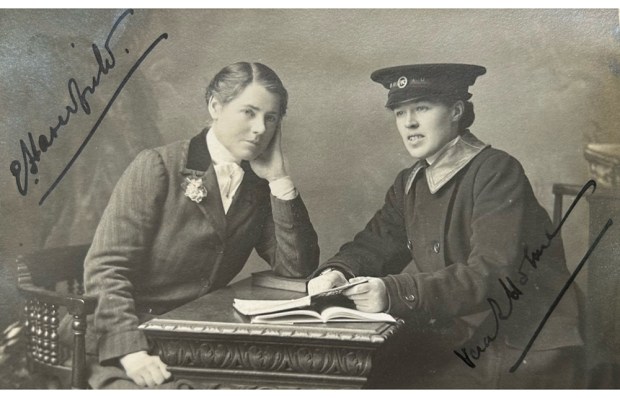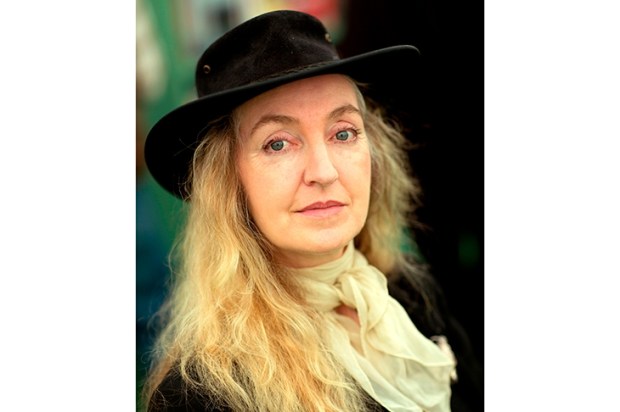‘The birthing mother is surrounded by the dusts of death,’ reads an inscription on a 3,000-year-old clay tablet, thought to be an ancient Assyrian incantation to ward off death in childbirth. There have been pressings of beads into clay, writings on vellum or cave walls and singing and making art about childbirth and motherhood for as long as small humans have been emerging from women’s bodies. Yet contemporary depictions of the process of becoming a mother – known as ‘matrescence’ – can be misleading or simply absent. As Katie Vigos, who set up the online Empowered Birth Project for women to share their birthing experiences, has said:
The female body in the midst of giving birth – blood, pubic hair, buttocks, the image of a baby exiting a woman’s vagina – seems to trigger people to report images. But there is no reason why we shouldn’t be able to show photos of physiological birth. It’s straight-up censorship.
Framing women’s bodies as being much more than objects of desire is at the heart of Lucy Jones’s book. ‘When a human animal grew inside my body,’ she writes, ‘I started to realise that some hoodwinking had been going on.’ When her first child is born she feels she has been ‘fundamentally misinformed about the female body and maternal experience’. Her quest to discover as much as she can about the physical, neurological, social and mental changes that occur during matrescence fuels both her scientific research and her profound personal interrogations:
Despite having given birth twice, I did not know that 3-6 per cent of women suffer anal injuries during birth… A proportion of those women will have serious, life-changing complications.
And who realised that water births can harm women because they prevent midwives from protecting the perineum? In the chapter titled ‘Birth’, I kept scribbling in the margins: ‘We need to know this stuff!’
Jones is excellent on the difference between historical views of motherhood and the actual experience:
Our contemporary idea of what is ‘natural’ is neutered and vague when it comes to childbirth… It is a fantasy. The mythical image of ‘natural childbirth’ is a quiet woman surrounded by fairy lights, peacefully and lovingly bringing a child into the world.
Yet nature is ‘bodies failing, cuckoos pushing eggs out of nests, a weirdly small human pelvis and a big infant head, illness and disease, shit and blood, ticks and cockroaches. “Natural childbirth” in the “natural world” often ends in infant or maternal death.’ It can also end in ‘clitoral tears, sepsis, rectoceles, fistulas and psychosis’. Jones’s ability to pinpoint the paradoxes inherent in today’s discussions about matrescence make this book an important addition to the literature of motherhood.
Much territory is covered: physiological changes and harms, and problems involving childcare, sleep deprivation, maternal ambivalence and breastfeeding. On the latter point, Jones lists many of the benefits of breast milk (though some go unmentioned), and also points out that it’s free – if you don’t factor in the time it takes out of a woman’s day. But she then claims that ‘breastfeeding’s long-term health benefits are overblown’. While I applaud her desire to avoid stirring more guilt into the cocktail of social opprobrium now served up to new mothers, surely we can accept that breastfeeding is the best thing for a baby, while acknowledging that for some mothers it may make more economic, medical or practical sense to use formula. It’s OK to admit that mothering won’t be perfect.
There are also extracts between each chapters about non-human life forms. Eels, mycelium, sea squirts and even the moon and the aurora borealis get mentions, projecting childbirth and motherhood into the larger perspective of life cycles. In the ‘Othermothers’ chapter, Jones writes about a female vampire bat who died 18 days after giving birth and how the orphan was raised by another bat as her own: ‘Humans, who evolve in collective care structures, are not the only species capable of altruism.’
Matrescence is wide-ranging in its scope, packed with statistics about mental health, new studies on the rewiring of women’s brains after childbirth and the presence of foetal cells in our bodies. What distinguishes it from other books on the subject is the seamless weaving of Jones’s personal trajectory through pregnancy, childbirth and early motherhood. At times she veers into the poetic when writing about the phenomenon of childbirth. She says she ‘had no language with which to understand or describe’ the changes in her body and mind; yet her ‘consciousness felt different: restructured or rewired… Our vocabulary occludes the maternal.’ In fact Jones seems to come as close as it’s possible to describing this indescribable moment in a woman’s life.
Got something to add? Join the discussion and comment below.
Get 10 issues for just $10
Subscribe to The Spectator Australia today for the next 10 magazine issues, plus full online access, for just $10.
You might disagree with half of it, but you’ll enjoy reading all of it. Try your first month for free, then just $2 a week for the remainder of your first year.














Comments
Don't miss out
Join the conversation with other Spectator Australia readers. Subscribe to leave a comment.
SUBSCRIBEAlready a subscriber? Log in